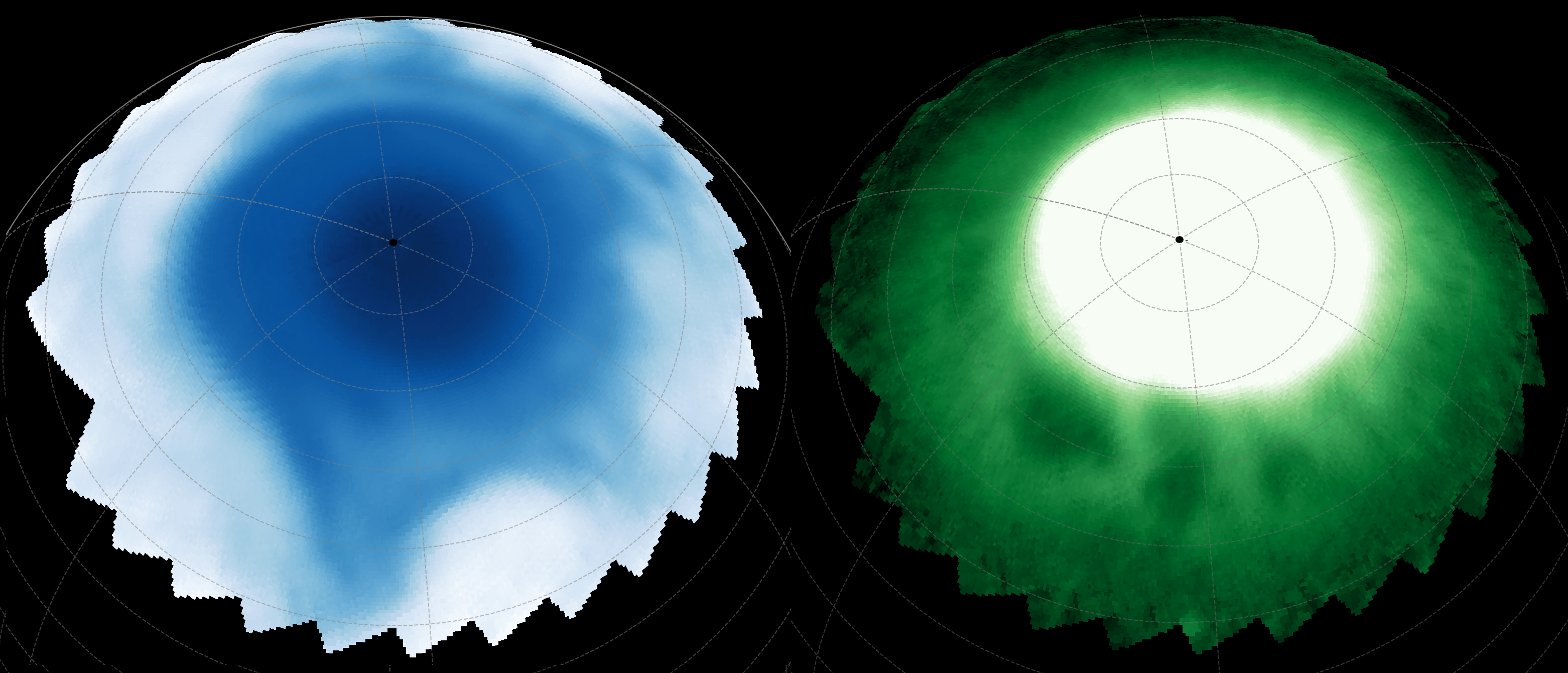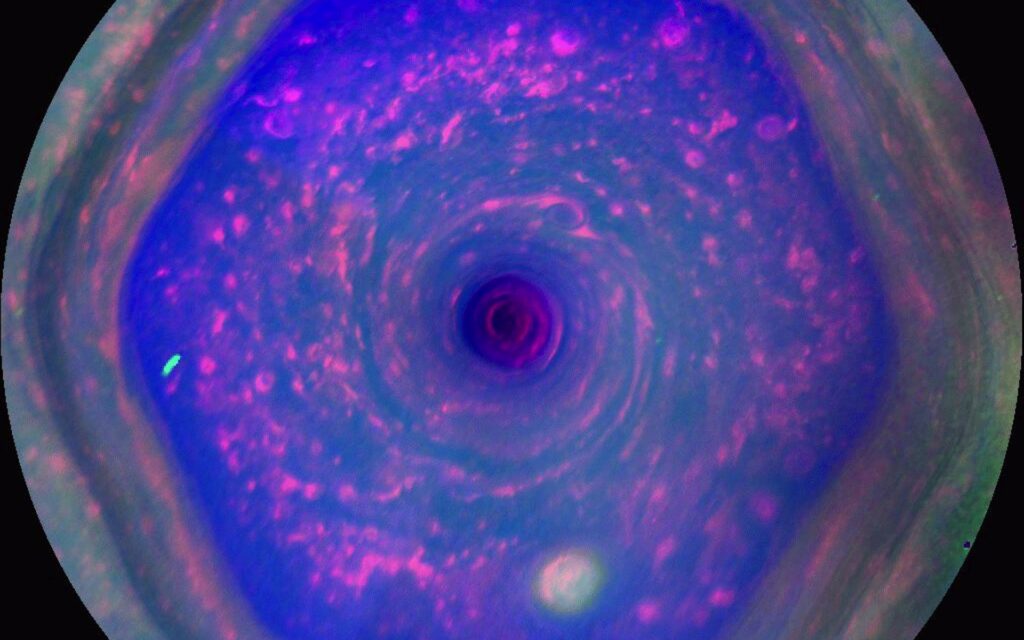The James Webb Space Telescope has discovered strange “dark beads “above a four-armed star pattern in Saturn’s atmosphere. The surprising structures are unlike anything scientists have seen before, and they’re not sure what they are.
The unusual features were discovered by the James Webb Space Telescope’s (JWST’s) Near Infrared Spectrograph (NIRSpec) as it peered into the gas giant’s atmosphere above the hexagonal storm that swirls at the planet’s north pole.
The astronomers expected to see emissions across broad bands of the infrared spectrum in the atmospheric layers above the vortex. Yet what they noticed instead were dark, bead-like features — separated by vast distances yet possibly interconnected — drifting slowly in the charged plasma of the planet’s ionosphere, and a lopsided star-shape structure in the stratosphere beneath. They published their findings Aug. 28 in the journal Geophysical Research Letters.
“The results came as a complete surprise,” Tom Stallard, a professor of astronomy at Northumbria University in the U.K., said in a statement. “These features were completely unexpected and, at present, are completely unexplained.”

Saturn’s Hexagon was first discovered in 1980 by NASA’s Voyager spacecraft and imaged in fine detail by the Cassini spacecraft, which orbited the planet from 2004 to 2017. It rises as an 18,000-mile-wide (29,000 kilometers) six-sided tower whirling above the planet’s surface, making a complete rotation roughly once every 10 hours.
Scientists believe that the hexagon is driven by a jet stream circling the planet’s pole, and owes its unique shape to the properties of the gases in Saturn’s atmosphere. Yet the exact reasons it has this flow and shape aren’t known for certain; and neither is the behavior of the upper atmosphere above it, due to the very weak emissions coming from it.
To investigate, the astronomers focused JWST’s NIRSpec instrument on Saturn’s ionosphere and stratosphere, located 684 miles (1,100 km) and 373 miles (600 km) above the planet’s nominal surface, respectively.
Related: Saturn will be at its biggest and brightest on Sept. 21 — here’s how to see it
Over 10 hours, the telescope tracked positively-charged hydrogen molecules (H3+, involved in many reactions in the planet’s atmosphere) across Saturn’s ionosphere and methane molecules throughout its ionosphere, revealing the strange structures.
“We think that the dark beads may result from complex interactions between Saturn’s magnetosphere and its rotating atmosphere, potentially providing new insights into the energy exchange that drives Saturn’s aurora,” Stallard said.
The asymmetric star pattern, meanwhile, may somehow be tied to the hexagonal storm pattern, he said.
“Tantalisingly, the darkest beads in the ionosphere appear to line up with the strongest star-arm in the stratosphere, but it’s not clear at this point whether they are actually linked or whether it’s just a coincidence,” he added.
To understand what could be causing the features, and their effects on Saturn’s atmosphere, the team hopes to conduct followup observations with JWST. Saturn is currently at its equinox, meaning the patterns could change drastically as the sun shifts across the planet’s face. On Sept. 21, the ringed planet will also be at its closest point to Earth — the best time to observe Saturn with telescopes and to attempt to parse its many mysteries.
